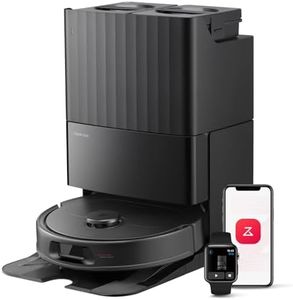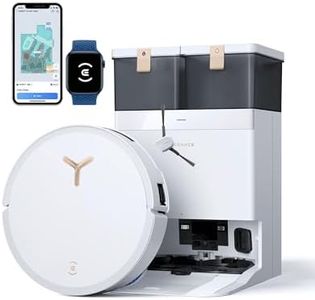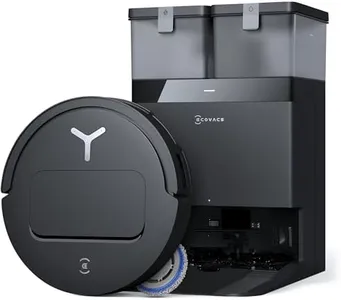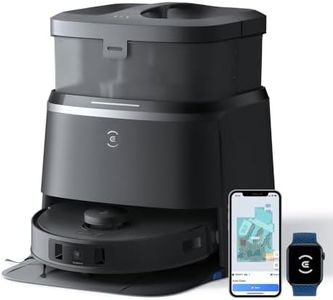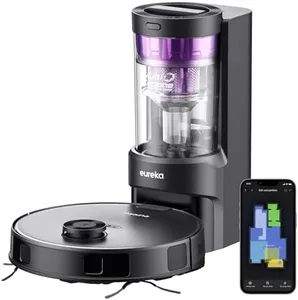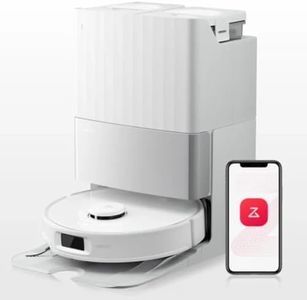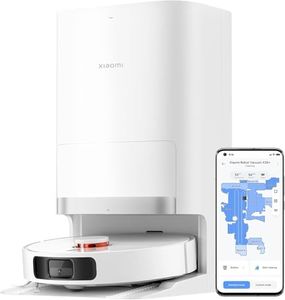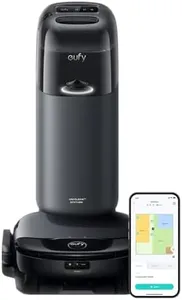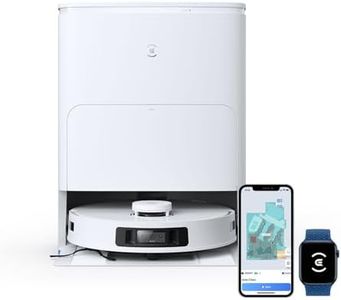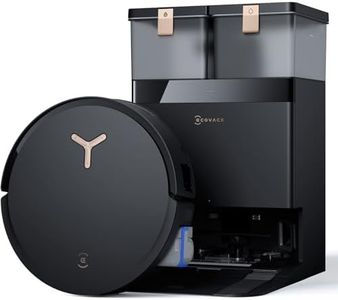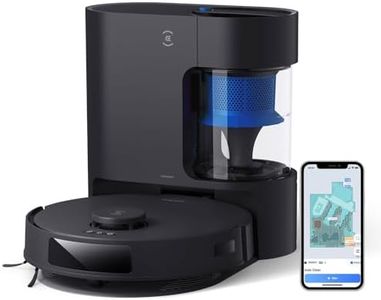We Use CookiesWe use cookies to enhance the security, performance,
functionality and for analytical and promotional activities. By continuing to browse this site you
are agreeing to our privacy policy
10 Best Robot Vacuum Cleaners
From leading brands and best sellers available on the web.Buying Guide for the Best Robot Vacuum Cleaners
When shopping for a robot vacuum cleaner, the key is to balance your home's cleaning needs with features that make your life easier. Think about the type and amount of flooring in your home, any pets, how often you want to clean, and whether you want to automate tasks like emptying the dustbin. Understanding the main specifications will help you choose a model that actually fits your everyday routine rather than adding unnecessary complexity.Suction PowerSuction power determines how well the vacuum picks up dirt, debris, pet hair, and dust from your floors. Higher suction means it can clean more thoroughly, especially on carpets. Basic robot vacuums have lower suction and may work best on hard floors with minimal debris, while mid-range options often balance good suction for both hard floors and low-pile carpets. High-end models have strong suction that handles thick carpets and pet-heavy homes. Choose a level based on how much dirt your household generates and your floor type.
Battery LifeBattery life tells you how long the robot can clean on a single charge. Shorter battery life (60-90 minutes) is typically enough for smaller homes or apartments, while larger homes or multiple rooms benefit from longer-lasting models (up to 120-180 minutes). Think about your space: bigger areas and more rooms may require a robot that can last longer or recharge and resume cleaning automatically.
Navigation and SensorsNavigation and sensors help the robot move efficiently without bumping into furniture or falling down stairs. Simple models use basic random movement and bump sensors, which can miss spots or take longer to clean. More advanced models use mapping technologies like lasers or cameras to plan paths and remember room layouts, making cleaning faster and more thorough. If your home has a complex layout or lots of obstacles, advanced navigation is worth considering.
Dustbin CapacityThe dustbin holds all the dirt the robot collects. A small dustbin needs to be emptied more often, which can be inconvenient in larger homes or for people with pets. Medium-sized bins strike a good balance for most average households, while larger bins or self-emptying bases are best for homes with lots of debris or if you want to empty less frequently. Your preference for maintenance and cleaning frequency should guide your decision.
Noise LevelNoise level is about how loud the vacuum is while operating. Quieter models allow you to run the vacuum during the day without much disruption, which is nice if you work from home or have young children or pets sensitive to sound. Standard models can be a bit noisy, especially on maximum suction. Consider your household’s routine and where the vacuum will be used most when thinking about how important noise is to you.
App Features and Smart IntegrationApp control and smart features let you schedule cleanings, monitor progress, and control the vacuum from your phone or with voice assistants. Basic robots may have simple remote controls or push-button operation, while smart models connect to apps and home assistants for more convenient, customizable cleaning. Choose simple controls if you prefer hands-on use, or go for smart features if you like automating daily chores or managing the vacuum remotely.
Mopping CapabilitySome robot vacuums offer mopping functions in addition to vacuuming. Basic mop features might just dampen a pad to wipe floors, while advanced types can handle tougher stains. If you have a lot of hard floors and want to reduce manual mopping, consider a model with robust mopping capability. If you mostly have carpets, this feature may be less important.
